Inspired by One Man's Compassion during Wartime
By Ray Geise OAM, Chairman, Toc H Australia
Great tragedies and disasters often bring out the best in people and anyone who knows the Ypres Salient in Belgium will know the truth in this statement. During the months of October and November 1914 British forces drove a bulge into the German front line on the Western Front about 20 kilometres long and no more than five kilometres deep. This bulge was known as the Ypres Salient and was located close to and east of the historic city of Ypres. It has often been referred to as one of the most infamous killing fields on the Western Front during World War 1. It claimed over one million casualties and between late 1916 and October 1917 all five Divisions of the AIF were involved in the fierce fighting that took place there. In the Battles of Broodseinde, Menin Road, Messines and Passchendaele, thousands of Australians were killed or wounded. If there are three words which would best describe the Ypres Salient they would probably be Courage, Destruction and Death.
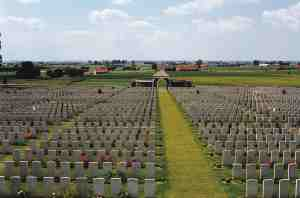
Tyne Cot garden cemetery where 1,368 Australians are buried
There was, however, one place in which those returning from the front line could find some relief from the traumas of war, and this was Talbot House in the small Belgian town of Poperinghe just 11 kilometres west of Ypres. In December 1915 Queensland born Army Chaplain, the Reverend P.B. (Tubby) Clayton opened a Soldiers Club here and right from the beginning it had a remarkable atmosphere.
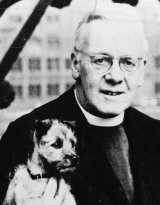
Rev Dr PB Tubby Clayton CH, MC, DD.
Here is what one young soldier wrote about Talbot House:
"Through an elaborate, iron-grilled doorway I could hear the sound of laughter and music, and pushing through the door I found myself at once in a different world. It was amazing. I felt like Alice when she stepped through the looking glass. There were soldiers all round me, of course, and Army slang in the air, but in stepping across that threshold, I seemed to have left behind me all the depression and weariness of the streets outside.
Here it was that war-torn men found a haven of rest - a place where they tried to forget; yes a spot where peace and quiet were actually found even amidst the noise of war. Here we found the fellowship we longed for, yet so difficult to get.
The house was, indeed, all that it professed to be - a home away from home. Army orders and army ranks were left outside. It could scarcely be otherwise, for up there in the Upper Room, General and Private knelt side by side in front of the Carpenters Bench; a room so sacred to many of us that it grows more hallowed with the passing of time."
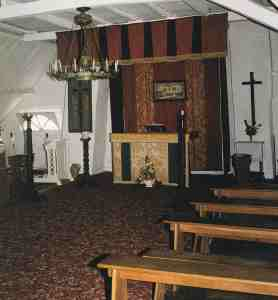
The Carpenters Bench (The Altar) in Talbot House today.
The Upper Room was the Chapel and it was situated in the loft of Talbot House on the fourth floor. Over 50,000 young men used it from 1915 to 1918; it did much to recharge their spiritual batteries. One young soldier left this anonymous and moving note in the Upper Room just before he left for the front line:
Will you pray earnestly for me that I may have strength given to me to do that which is right and to make an effort to help others; not so much by what I say, but by my whole life. I have wandered away very far, but I want to put things right; and the prayers of Talbot House will mean much to me.
Compassion, Caring, Understanding, Fair-mindedness, Service were all ideals which were espoused by the men who knew Talbot House, and above the door which opened on to the street hung a large sign which read "Everymans Club 1915 -?".
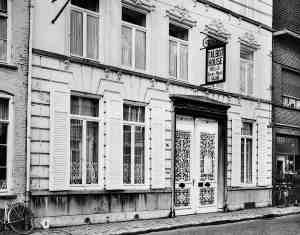
Talbot House, 1915. The sign above the front door reads: "TALBOT HOUSE 1915-? Every•Man's CLUB".
It is not known how many Australians went to Talbot House from 1915 to 1918, but as all five Australian divisions passed through Poperinghe on their way to the Ypres Salient there would have been many who found their way to it. Many also spent time there on their way back from the front line. Amongst those was Corporal Jim Arkell of the 7th Australian Field Ambulance and he visited the House on several occasions. He and Tubby Clayton became close friends.
And so amidst the horrors of war an ideal was born, a lofty ideal and it found expression in a world wide movement called simply Toc H, the Army signallers code word for Talbot House.
After the war ended all of those who had known Tubby Clayton and Talbot House decided that the ideals for which the House stood should never be lost and in 1922 the Toc H Movement received its Royal Charter. In 1923 the then Governor General of Australia, Lord Forster, wrote to Tubby Clayton saying that he and Lady Forster would like to give a Toc H Lamp in memory of their two sons who had died in the Great War. The Lamp reached Australia in 1925 and has since then been enshrined in Christ Church Cathedral, Newcastle. It is the parent lamp of Toc H Australia.
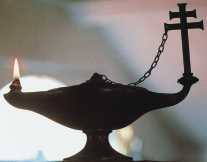
The symbol of Toc H is a lighted lamp.
From 1925 to the outbreak of World War 2 Toc H spread rapidly to all Australian States and its members built a fine tradition of 'Caring for People' carrying on the ideals for which Talbot House stood. They pioneered the Blood Transfusion Service, the Junior Farmers Movement, the Royal Queensland Bush Children's Health Scheme and the Camping Program for children in need or with disabilities. In Brisbane in 1926 children from the Royal Brisbane Children's Hospital were taken to the Brisbane Exhibition. (This project continues to this day and in 2000, ninety children were involved). Jim Arkell played a leading role in Toc H in Queensland for almost fifty years and for his outstanding service was awarded the MBE.
During World War 2 many Toc H members served in the armed forces. Thus it was not uncommon to find Toc H groups in many units. In Changi prisoner of war camp there were three Toc H groups. Around Australia Toc H Services Clubs were established in Perth, Adelaide, Melbourne, Brisbane, Townsville and Cairns. Tens of thousands of men and women used them, and the one in Cairns was even called Talbot House.
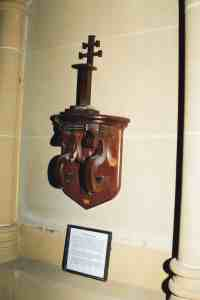
The Toc H Rushlight used by Toc H members in Changi POW Camp, 1942 - 1945.
World War 2 had a big impact on Toc H in Australia. Membership was reduced and many branches closed. In spite of this the movement continued and has been led by many well known Australians - Lieutenant General Sir Edmund Herring, Senator Neville Bonner, Sir William Keys and many more. Toc H members work on the principle that although there are many welfare agencies around and although vast sums of money are spent annually on all sorts of worthwhile community projects there are still many people who are in need. The real job of any Toc H member or branch is to seek out these people and to respond to their needs.
Throughout Australia Toc H members work quietly on problems like loneliness, old age and reconciliation. One major focus today is on youth and for the past fifteen years Toc H has conducted very successful Youth Leadership Training Programs around Australia. Many who have been through these programs are already in leadership roles in the community. Since 1947 Toc H Queensland has hosted the Midnight Service inside the Shrine of Remembrance, ANZAC Square, Brisbane on ANZAC Eve and in 2000 it was supported by the largest crowd since it was first held. Most of those present were under thirty years of age and many were involved in the service. Prior to the Service an evening entitled We Will Remember Them - Flanders Fields and Beyond was held and it too was very well supported.
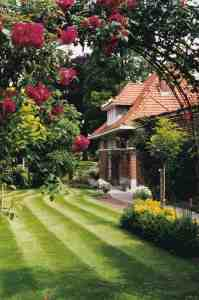
The garden at Talbot House today.
And so the Spirit of Toc H which had its roots in the darkest years of World War 1 on the Western Front lives on. Talbot House in Poperinghe continues to inspire the movement. It is the same as it was in 1915 and is visited by tens of thousands of people from all round the world every year. In a very real sense Toc H is a living memorial, not only to those who passed through the doors of Talbot House during World War 1 but also to those who have unselfishly given their lives in service to their country. There is a saying in Toc H that goes "Service to others is the rent we pay for our room on earth".





